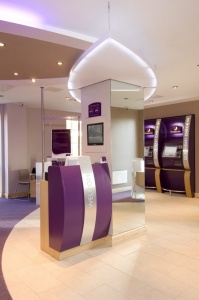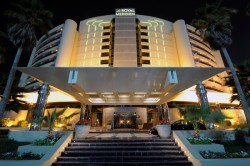2009 Review: Hospitality

The big trend in hotels this year was the move away from full-service five-star properties to budget hotels. So which players are reaping the rewards in this new age of austerity?
This was predicted back in February at the Business Travel Show with the release of a report commissioned by travel technology company Amadeus and conducted by the Economist Intelligence Unit.
The report predicted that a “new age of austerity” in terms of business travel was dawning with travellers taking fewer, shorter and cheaper business trips and opting for basic efficiency and good service over ancillary services.
As corporate budgets were frozen or slashed, more and more travellers opted to do this.
The net effect was that many five star properties found themselves taken off corporate travel policies, forcing them to try and get themselves re-categorised as four star hotels.
ADVERTISEMENT
The trend was not solely confined to business travel, however, with many luxury properties forced to close floors to save money as occupancy levels sunk to new lows.
This was most acute in Mexico, where at the height of the swine flu panic occupancy rates dipped to single figures.
The capital also led the world’s cities with the lowest average room rates for five years in the first half of this year, of just £49.
However, according to the head of the Mexican Tourist Board in the UK, Manual Diaz Cerebran, the country is now past the worst and there were a number of campaigns in place to stimulate tourism to the country. These include a Mexican Season which started with the official opening of Moctezuma: Aztec Ruler at the British Museum, and is followed by Revolution on Paper: Mexican prints 1910 - 1960.
However, he added: “Despite the fact that consumers might be expecting lower prices, we must stress that Mexico is not about to become a cheap destination.”
Construction around the world, most notably Dubai, ground to a halt in the first few months of this year.

However, it was not all bad news as a number of properties and destinations managed to buck the worldwide trend.
In September, the Langham Hotels Group announced a US$1bn expansion to its portfolio of luxury hotels by 13 over the next few years.
The group will focus on Asia Pacific, with properties planned for Tokyo, Singapore, Thailand and Thailand, and the Middle East.
It also plans a conference spa facility in France, and a hotel in Liverpool and a 224-bedroom Langham Place, Resort & Spa, Port St George, Bahamas.
Relais & Chateaux reported a 39% increase in bed nights in the third quarter of this year, reservations up 35% and average length of stay up 3%.
Starwood also continued to open hotels worldwide throughout 2009, with plans to have 100 hotels in China alone by 2012.
And the world’s largest hotel group, IHG, announced that it would be spending US$175 million in combined totals for new property announcements throughout Latin America.
Meanwhile, there was no let up in the number of new luxury hotels openings in the Maldives, including a Shangri La Resort & Spa. British Airways also reported strong forward bookings on its newly-launched route to the capital Male.
Abu Dhabi was one of the few cities which continued to build hotels and, due to an acute lack of supply, was also able to up its rates.
In fact, a survey at the start of the year of more than 92,000 room night bookings across the world during the first quarter of 2009 showed Abu Dhabi led the way with the largest increase in hotel room rates.
 On average, its year-on-year rates rose by more than 33 percent to become the most expensive in the world at £173.
On average, its year-on-year rates rose by more than 33 percent to become the most expensive in the world at £173.
This is in stark contrast to Dubai which recorded a room rate decrease of 25 percent over the same period.
Meanwhile, the budget hotels upped their game in terms of facilities and slashed their costs, tempting many road-warriors to use brands such as Express by Holiday Inn, Travel Lodge and Premier Inn for the first time.
(Above: the Royal Meridian Dubai)
Premier Inn announced it will be opening four new hotels at London’s main airports from Autumn 2011, two at Heathrow and one at Gatwick and one at Stansted, creating a total of 1,570 new rooms. It is spending more than £125 million on the developments. It also opened its first property in Dubai, one of the few budget hotels to operate in the emirate.
This trend to downgrade was backed up by a second report, released in September, which confirmed the predictions by the Economist Intelligence Unit.
The report, by Samsung and OnePoll, found almost 40% of those polled said they were becoming “less convinced” about the added value of premium properties.
And almost a third said they considered staying in a budget hotel to be “a great experience”.
The research also found that 87% of travellers pay on average less than 120 euros per night for their stay.
September marked a flattening out for many UK hotels in terms of rates, occupancy levels and yields.
A report by Deloitte predicted there will be a slowdown in the rate of decline with a pick up in the last three months of next year.
Marvin Rust, hospitality managing Partner at Deloitte said: “The revised forecasts show that for hotels in London and across the UK, the worst falls in revPAR [revenue per available room] are probably behind us now.
“However, both sectors still face further falls in revenue before recovery takes place.
He did not predict a return to growth in the capital before Q4 2010.
Rust predicted that the rest of this year and the beginning of next would be tough for hoteliers, but less so for London – if the pound stays weak. The capital recorded 80% occupancy rates in the first three quarters of this year, a performance described by Rust as “very impressive”, and partly down to strong leisure demand at weekends.
Hotel group Accor saw better results in London than the regions, with a fall of 6% in revPAR in the capital, compared to 16% elsewhere.
The group continued to expand, opening 18,700 rooms to the end of September, and aims to make a profit of E400m-E450m by the end of the year.
In the regions, occupancy rates are starting to creep back up. Edinburgh saw a 3% increase in occupancy rates in August compared to last year, to 91%. However, rates were down by 7%. So which players are reaping the rewards in this new age of austerity?
Leeds and Liverpool also saw their occupancy levels increase, by 3% and 7.6% respectively. However, both cities saw sharp falls in yields.
Robert Barnard, partner for Hotel Consultancy Services at PKF, said: “This year was always going to be a tough one for hoteliers and therefore these figures are not hugely surprising.
“It is heartening to see that occupancy rates are creeping back up in many of the cities.
“But, ultimately, if hoteliers can continue to draw in visitors, they will be in a better position to slowly increase room rate as soon as the economic situation allows them to.”

